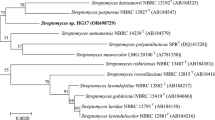Abstract
Growth studies were conducted on C. albicans in a glucose — salts — biotin (GSB) medium in the presence of folate inhibitors. Sulfanilamide inhibited growth which was restored by PABA or tetrahydrofolate (THF). Aminopterin inhibited growth to about the same level as did sulfanilamide, but this inhibition was not reversed with PABA nor THF, singly or in combination. Inhibition by combined sulfanilamide and aminopterin was synergistic, reducing growth by more than 90% for 48 h. The sulfanilamide component of the combined inhibition was reversed by PABA or THF to the level of that of aminopterin alone. Cytochrome synthesis was not affected by the inhibitors, but marked increases occurred in α-ketoglutarate, malate, isocitrate, and pyruvate dehydrogenases, especially in the presence of both inhibitors. The pyrimidines in combination with sulfanilamide were as inhibitory as was the combination of aminopterin and sulfanilamide, but they had no effect when added alone or in combination with aminopterin. Unlike the pyrimidines, the purines stimulated about a 50% recovery from inhibition by either of the inhibitors. Growth inhibition by combined sulfanilamide and aminopterin was overcome by about 50% by the addition of the THF-mediated end-produits: deoxythymidylate, adenine, histidine and methionine. The use of GSB medium containing adenine, histidine, methionine and the folate inhibitors but without deoxythymidylate resulted in thymineless death of prototrophic cells providing a method for the selection of auxotrophic mutants.
Similar content being viewed by others
References
Angier, R. B., Boothe, J. H., Hutchings, B. L., Mowat, J. H., Semb, J., Stokstadt, E. L. R., Subbarow, Y., Waller, C. W., Cosulich, D. B., Fahrenbach, G.J., Hultquist, M. E., Kuh, E., Northey, E. H., Seeger, D. R., Sickels, J. P. and Smith, J. M. 1946. The structure and synthesis of the liver L. casei factor. — Science 103: 667–669.
Barclay, B. J. and Little, J. G. 1977. Selection of yeast auxotrophs by thymidylate starvation. — J. Bacteriol. 132: 1036–1037.
Black, W. A. 1970. Sensitivity of Nocardia to trimethoprim and sulfonamides in vitro. — J. Clin. Pathol. 23: 423–426.
Genther, G. S., Shoeny, R. S., Loper, J. C. and Smith, C. C. 1977. Mutagenic studies of folic acid antagonists. — Antimicrob. Agents Chemother. 12: 84–92.
Kot, E. J., Olson, V. L., Rolewic, L. J. and McClary, D. O. 1976. An alternate respiratory pathway in Candida albicans. — Antonie van Leeuwenhoek 42: 33–48.
Lemberg, A., Daunas, J. A., Brodoff, B. B. and Penhos, J. C. 1967. Action of methotrexate on metabolism of lipids and carbohydrates of the perfused isolated liver. — Cancer 20: 1668–1672.
Luzzati, M. 1975. Isolation and properties of a thymidylateless mutant in Saccharomyces cerevisiae. — Eur. J. Biochem. 56: 533–538.
Martin, D. C. and Arnold, J. D. 1969. Trimethoprim and sulfene therapy of Plasmodium vivax. —J. Clin. Pharmacol. 9: 155–159.
Okada, T., Yanagisawa, K. and Ryan, F. J. 1960. Elective production of thymineless mutants. —Nature 188: 340–341.
Sarackek, A. 1964. Pseudoprototrophs and the absence of genetic interactions between auxotrophic strains of Candida albicans. — Microbiol. Genet. Bull. 20: 15.
Cavage, N. and Balish, E. 1971. Morphology, physiology and virulence of some mutants of Candida albicans. — Infect. Immun. 3: 141–148.
Seydel, J. K., Wemple, E., Miller, G. H. and Miller, L. 1972. Kinetics and mechanisms of action of trimethoprim and sulfonamides, alone or in combination, upon Escherichia coli. — Chemotherapy 17: 217–258.
Shepherd, M. G., Chin, C. M. and Sullivan, P. A. 1978. The alternate respiratory pathway of Candida albicans. — Arch. Microbiol. 116: 61–67.
Sherman, F. and Slonimski, P. P. 1964. Respiration deficient mutants of yeasts. II. Biochemistry. —Biochim, Biophys. Acta 90: 1–15.
Stokstadt, E. L. R. and Koch, J. 1967. Folic acid metabolism. — Physiol. Revs. 47: 83–116.
Stone, A. B. and Wilkie, D. 1974. Cellular and mitochondrial effects of folate antagonists by primethamine in Saccharomyces cerevisiae. — J. Gen. Microbiol. 83; 283–293.
Watkins, P. D., Brandt, P. M. and McClary, D. O. 1974. Selection and characterization of acriflavine-induced mutants of Candida albicans. — Antonie van Leeuwenhoek 40: 153–160.
White, W. E., Yielding, K. L. and Krumdieck, E. L. 1976. Folates as inhibitors of glutamate dehydrogenase. — Biochim. Biophys. Acta. 429: 689–692.
Wood, D. D. 1940. Relation of p-aminobenzoic acid to the mechanism of action of sulfanilamide. —Brit. J. Exptl. Pathol. 21: 74–77.
Author information
Authors and Affiliations
Rights and permissions
About this article
Cite this article
Henson, O.E., McClary, D.O. Growth inhibition of Candida albicans by folate pathway inhibitors. Their potential in the selection of auxotrophs. Antonie van Leeuwenhoek 45, 211–223 (1979). https://doi.org/10.1007/BF00418585
Received:
Issue Date:
DOI: https://doi.org/10.1007/BF00418585




